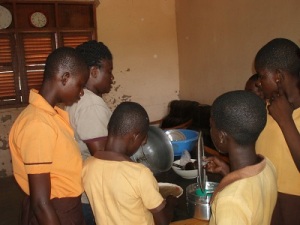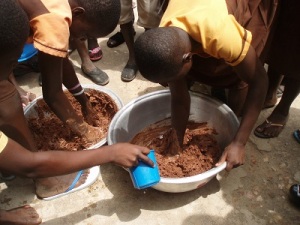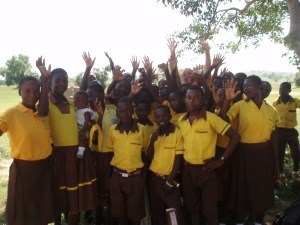The Amok is a traditional dish from Cambodia. It can be made with fish, pork, tofu, or chicken. Very tasty and a little bit spicy (depending on each recipe) this is always coming with steamed rice, as rice is the basis of all our meals, even breakfast! By the way, to eat in Khmer is “nyam bai” which literally means “to eat rice”!
We went to Haven restaurant to discover the recipe with a real Chef, it was very interesting to see this big kitchen! Haven is a restaurant, but also a social enterprise that is training vulnerable young adults from orphanages and safe shelters, as well as underprivileged young adults from very rural poor areas to be future restaurant workers and owners.
The Chef even took us to the market to choose the good ingredients! Then we all ate our Amok. It was delicious, especially because we made it!
To do a fish Amok you need:
- 4 Amok leaves
- ½ white onion
- ½ red onion
- 3 gloves of garlic
- 100 grams of river fish
- 3 spoons of curry paste
- 1 Stock chicken
- 1 spoon of sugar
- 1 spoon of Tamarin Sauce
- Coconut milk
- Fish Sauce
- White mushrooms
- Chili Sauce
- Cooking oil
Read all the posts by École du Bayon.
Read all the post by students from Cambodia.






























